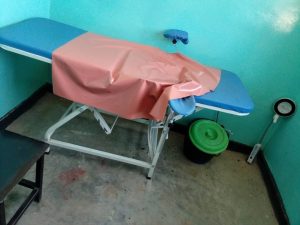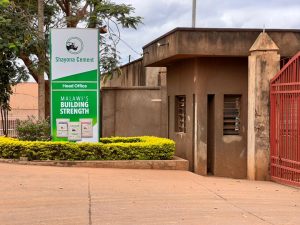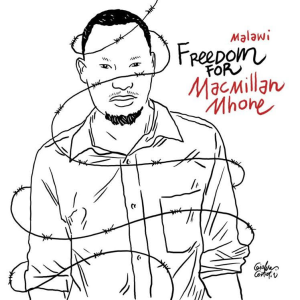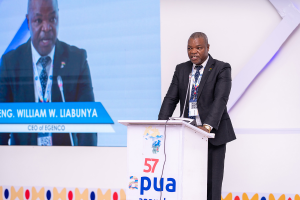MOZAMBIQUE – MALAWI POWER INTERCONNECTION COMPENSATIONS GO SOUR
Some communities affected by the Mozambique-Malawi (MOMA) power transmission interconnection project are expressing dissatisfaction with their compensations, alleging that they were misled by the Electricity Supply Corporation of Malawi (ESCOM).

Project Works
BY JOSEPHINE CHINELE
ESCOM, the Electricity Supply Corporation of Malawi, has touted its efforts to improve the lives of over 500 families affected by the Mozambique-Malawi (MOMA) power transmission interconnection project through compensations. However, some communities in Traditional Authority Mlauri in Neno are feeling deceived.
The MOMA project involves a 218-kilometre, 400-kilovolt (kV) high-voltage electricity transmission line that starts from Matambo in Mozambique and crosses into Malawi through the Mwanza and Neno districts, reaching the ESCOM Phombeya power sub-station in Balaka. On the Malawi side, the transmission corridor spans 76 kilometres.
In April 2022, President Lazarus Chakwera and Mozambican President Filipe Nyusi jointly laid a foundation stone for the construction of the MOMA Power Transmission.
Ten dissatisfied Project Affected Persons (PAPs) from the Chifunga area have expressed their disappointment, claiming they received compensation ranging from K80,000 to K2.5 million. These amounts fall far short of what they expected based on the promises ESCOM allegedly made during project briefing meetings. The communities assert they were given high hopes through financial training sessions before receiving compensation.
The communities allege the project has threatened their food security and livelihoods and robbed them of their land at worthless amounts.
These communities argue that the project has threatened their food security and livelihoods and devalued their land by the compensation paid.
Unfulfilled Promises
“They said our lives would improve after receiving the money, which would help finance land acquisition and house construction. For the elderly over 50 like me, they promised monthly stipends aside compensation amounts,” recalled 68-year-old Hamida Lipukama of Jonathan Village, Traditional Authority Mlauri in Neno district. She alleges no elderly has benefited so far.
The affected communities were instructed to keep their compensation information confidential, which they believe worked against them when they discovered that their compensation was significantly lower than that received by other PAPs in Phombeya and Lisungwi areas, where they managed to buy vehicles, motorcycles and houses.
Inadequate Compensation
Lipukama, who used to rely on the land, now occupied by electricity pylons, for her maize harvest, lamented:
“I was shocked to receive only K640,000 in compensation, yet I was promised that this compensation would lift me out of poverty. Unfortunately, this money coincided with my daughter’s illness, which all went towards medical bills. I now have no land for cultivation and nothing to show for the compensation money. This has left me even poorer as I now have to buy maize.”
Lipukama says she did not have a bank account but was told to open one with FDH bank to be used to receive compensation money.
She added: “They never told us the truth about this whole thing. I feel duped. But they had already planned to do this project. There was nothing we could do to stop them.”
Lipukama claims that she used up all her compensation money and now has no income source to sustain herself, “I have nowhere to farm this year. I can’t afford to buy a 50 kg bag of maize, which is now selling at K45,000 at Chifunga Trading Centre. Imagine how much it will be by the leanest period of December to March. What will become of me?”
Another PAP, Benadetta Chilumba, who received K432,500 as compensation, as opposed to a million she hoped would come, expressed her dissatisfaction, saying:
“They never explained this process to us. They bombarded us with information only when it was time for us to sign for our compensation money. We don’t understand how they arrived at these amounts. Did all these financial NGOs come here for such a small amount of money?”
Chilumba said the project had taken away her source of income, which was the baobab trees where she was processing its fruits for sale.
Chikondi Mambo, another PAP receiving K475,000, questioned the criteria for determining compensation amounts.
She said, “I received an additional K44,000 because they will also place towers in my garden. But I’m still unsatisfied because others in different areas received more for the same impact on their land. I wonder how they arrived at these decisions.”

Ignored Complaints
The dissatisfied communities reported their concerns to the project’s local grievance committee but were unsatisfied with the responses. They allege that the committee leaders explained the differences in compensation by claiming that their land was hilly and had many stones, unlike the flat land of their counterparts in other areas.
Grievance Committee Chairperson for the Chifunga area, Arnold Vinti, confirmed receiving complaints but stated that the committee had sought to re-assess the compensation values through consultants. However, this did not yield significant changes. He clarified that committee members served voluntarily without payment from ESCOM.
“Our committee asked consultants to do this, but they told us they had completed their work. I know only one person who hasn’t yet received her compensation, but she will receive it soon,” he said.
Consultant’s Perspective
The Chifunga communities also claim they took their issues to a resettlement plan consultant who visited the area to verify. Still, they were told it was ‘irreversible’ at that point.
“The Grievance committee was not interested in sorting out our issues. We suspect this because ESCOM pays them. We also took our issues to Asian Consulting Engineers, who were involved in this process. They promised to help us, but we are still waiting,” Mambo said.
Asian Consulting Engineers is one of the companies contracted to implement the resettlement action plan for the MOMA project.
PIJ’s visit to part of the MOMA corridor in Neno in July established that ESCOM is working on mounting project corridor towers on the ground. The corridor is cleared, trees have been cut down, and machinery is on the ground. The project is taking shape. We did not notice any stones or hills around part of the land we visited, which also happens to be part of the land for the PAPs surrounding the Chifunga area.
Community Liaison Officer for Asian Consulting Engineers, Fred Chizule, confirmed working on the project, denied allegations that the communities were deceived, and stressed that financial management training had no monetary value. He acknowledged misunderstandings between the consultants and the communities regarding compensation amounts.
Compensation Process
“The amounts were given based on their variations and land economic viability. Chifunga and Phombeya communities could not get the same amounts,” insisted Chizule.
“People had high expectations due to the high poverty levels in the communities…This problem was created by the financial management training they received from different financial institutions. They thought they would be receiving millions,” he further told PIJ.
The Winners
Former Cabinet minister and Parliamentarian Joe Manduwa is one of the PAPs who received K13 Million compensation.
He said even though he is satisfied with what he received because he might not have gotten a more enormous amount at once if he had sold the trees himself, he was not given a chance to compare or question how the figures were reached.
“To be honest with you. Many are not happy with how the compensations were done. I feel the process has been unfair. First, we didn’t choose for the transmission line to pass through our land; ESCOM did. Why should they dictate to us to give us 10 per cent of the total land cost? Why not just buy off the land at 100 per cent value?” he questioned.
Manduwa disclosed that before the compensation, he was already well off as he owned a farm, “I already have several investments. They can’t claim that they helped me, but if there were consideration for someone who is a typical villager with nothing, this would mean a lot.”
Manduwa also bemoaned ESCOM’s negligence of the trees cut from the ‘bought’ land as they were left for anyone nearby to take them.
“Of course, they bought the land with trees, but there are no proper disposal procedures. In my case, People just came from nowhere and shared the trees in my yard amongst themselves. It’s as if they were just waiting for this moment. I had lots of high-quality trees,” he said.
Mayeso Dickson, a charcoal businessman, received a K2.5 Million compensation, which he has used to boost his business and share some amongst her children.
“They said I got more money than my colleagues because of the trees in the land they used. But I’m still not satisfied with this. We were informed about this project as if we would get lots of money to change our livelihoods,” he said.
Twisted Claims
ESCOM explained that compensations were calculated using a resettlement action plan approved by the government through the Ministry of Lands. The amounts were determined based on the value of assets, such as trees or houses, disturbed by the project.
ESCOM clarified that the highest compensation amount initially promised was K600 million but was later reduced after verification. The project had initially registered ghost PAPs during the first evaluation, and the verification exercise rectified this.
ESCOM’s Senior Projects Officer, Alex Kaitane, stated that during the financial disclosure process, all PAPs had the choice not to sign their compensation forms if they were unsatisfied. Only three individuals initially refused to sign but later agreed to collect their allocated amounts.
Kaitane confirmed receiving two complaints but none from the Chifunga area.
He added: “We have had people not affected coming to us to help them with ‘something’ or asking us to divert the corridor through their land so they could get compensated. We have faced a whole lot of issues.”
ESCOM is currently building 51 houses in some affected areas around Zalewa and Lisungwi areas. Other people opted to get money instead of houses, “it’s a two-bedroomed house with a veranda and a kitchen. It will also have electricity.”
Kaitane confirmed that ESCOM indicated providing a two-month vulnerability compensation to the affected elderly and disabled (among other vulnerabilities). However, this will be done in the project’s second phase, falling under the livelihood restoration phase, “The consultant will go to back the areas for assessments.”
ESCOM is still compensating 90-95 per cent of people affected by the project have been paid. Others have yet to be paid because they are in land disputes.
There is a court case where one person is against eight people, leading to a compensation stalemate. If this continues up to the end of the project, ESCOM will open a separate account where the money will be kept and given to the rightful owner once they reach a compromise.
Kaitane disclosed that ESCOM provided phones and airtime to grievance committees.
According to Kaitane, the people were compensated per the land used and not the entire land. This means after the project, although the area will have an electricity corridor, communities could use it for farming.
“They will not do farming in the 2023/24 farming year. They will be allowed to use part of their land, but trees are not allowed.”
Government’s Take on Compensation
The Ministry of Lands told PIJ that compensations are based on the properties or improvements they have or the number of properties affected by the project.
Through a written response, the ministry’s spokesperson, Enock Chingoni, refuted claims that people got compensation at 10 per cent land value.
He said the 10 per cent given to them was not payment for total land acquisition; instead, it was given to them as a disturbance because the project needed to take up the land.
“The project will temporarily be using the land during electricity lines construction. Once the work is completed, communities resume their routine land usage. However, they will not be allowed to plant trees or build houses under the electricity lines. But for the land where the project erected pylons, full compensation value (100%) was paid to the affected person because they will not use their land again,” he said.
National Benefits
The MOMA project is expected to improve Malawi’s electricity supply by adding 50 megawatts to the current supply. Additionally, once completed, the project is expected to contribute to the economic growth of the SADC region through sustainable power access by integrating the Malawi electricity market with the Southern African Power Pool (SAPP). This will balance the power deficit through regional power trading. MOMA is Malawi’s first interconnection to the SAPP.
The World Bank, German Development Bank, KfW, European Investment Bank and Malawi government fund the $154 Million MOMA project. $3.5 million of that was allocated to compensations. ESCOM says the project was scheduled to end in December 2023 but has been slightly delayed. Any additional funds that have come in due to inflation, among other factors, will be incurred by ESCOM.





